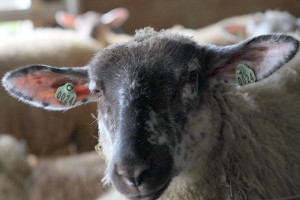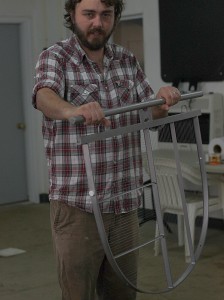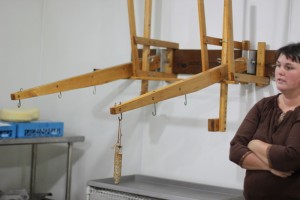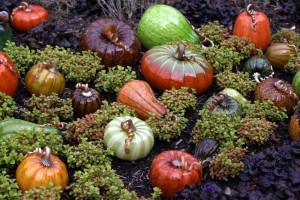Thanksgiving is a little over a week away. This week I'll share some of my favorite recipes.
Cooking a whole bird is a beautiful thing. The cook has the ability to infuse the meat with distinct flavors and a whole bird can feed a family for many meals. Use these techniques for a perfect Thanksgiving turkey, family style chicken dinner, or delicate individual game hens.
Brine - A sugar/salt brine infuses the bird with flavorful juices. (2-18 hours)
Make one by boiling one half gallon (8 cups) water and adding one cup kosher salt and one half cup sugar, boiled to dissolve and then cool it with one half gallon (8 cups) ice. You can add aromatics such as bay leaf, peppercorns, whole allspice, or orange peels once the brine is made.
Soak the bird in brine for a time appropriate to the thickness of the breast. For a fresh (or thawed frozen) bird, leave the bird in brine for the appropriate length of time:
game hen - 2 hours, fryer chicken - 6 hours, roaster chicken - 8 hours, turkey - 12+ hours. Brine is optional but greatly enhances the flavor and juicy-ness of the bird.
Stuff - Add flavor to a bird by stuffing the cavity and skin with aromatics. Stuffing with bread filling is not recommended by the USDA and extends cooking time, which can dry the meat. (10 minutes)
Fill but do not over-stuff the cavity with quartered onions, fresh herbs, or citrus. Slide a finger between the breast and skin and place butter and/or herbs under the skin for a more delicious and juicy bird. Stuffing is totally optional.
Truss - Tie up the bird’s legs to cook evenly and not dry out. (5 minutes)
Using a 2 foot length of butcher’s twine or plain cotton string, tie the feet together. Push the tail fat under the legs inside the cavity. Then, drive a bamboo skewer between the two wings and through the bird so that they are held closely to the rest of the bird.

Roast Hot and Fast - Low and slow methods work well for fat-marbled meats, which turkey, chicken and the like are not. Instead, roast at a high temperature to brown the skin, reduce temperature and do not over-cook. NB: Fatty water fowl should be steamed before roasting. (1-3 hours)
Thaw your bird to room temperature. Place it atop a few chopped vegetables (carrots, celery, onion) or directly in a roasting pan, breast side up. Optionally, rub with olive oil or butter. Sprinkle skin with salt and pepper.
Put the pan in a pre-heated 400 degree oven for 15-25 minutes until skin is browned. Drop the temperature to 350 degrees and continue cooking until the meat reaches 165 degrees F at the thickest part of the breast. Be sure you are not hitting bone when you measure temperature. Do not rely on pop-up gauges.
Rest - Allowing meat to rest is the most overlooked part of cooking. This step is absolutely necessary for the protein to cool and seize up the juices. (5-20 minutes)
A whole turkey should rest for at least 20 minutes, a chicken 10, and a game hen 5. Rest out of the oven on a cutting board.

Carve - Use a very sharp knife and bold strokes to carve a bird. (10-15 minutes)
First, break shoulder to wing joint. Carve through the wing at the shoulder joint to remove the wing. Split into wing and drum if you wish. Next, cut the breast pieces off, leaving skin in tact. Set aside and slice later. Then, remove the leg and thighs from the hip by breaking and cutting through the joint. If desired cut between leg and thigh at the knee joint.
Savor - The drippings and carcass of a bird can yield several more dishes. (20 minutes - days)
For gravy, skim fat from pan drippings. Heat drippings over medium heat. Add a slurry of water and flour slowly. Cook for 5 minutes, stirring, until sauce thickens.
Pick bits of meat off the carcass for making into salad, soup, or sandwiches.
To make stock, cover the carcass with water in a wide roasting pan with an onion, halved, celery chunks, and carrots. Cook at 200 degrees F in the oven for 8 hours. Strain the resulting stock, skim fat from top, and use in soup, risotto, or sauce. Stock can be frozen for up to one year.
This tutorial was part of the instruction at a recent cooking class. The participants there had plenty of questions. Do you?
Added to Hearth and Soul.
 An Old-Fashioned Thanksgiving
An Old-Fashioned Thanksgiving
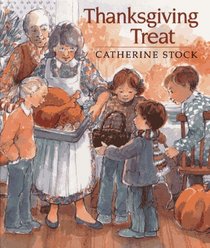 Thanksgiving Treat by Catherine Stock
Thanksgiving Treat by Catherine Stock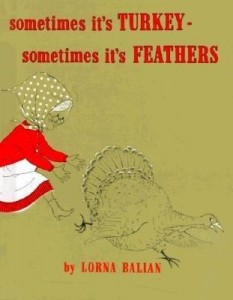 Sometimes It's Turkey, Sometimes It's Feathers by Lorna Balian
Sometimes It's Turkey, Sometimes It's Feathers by Lorna Balian




